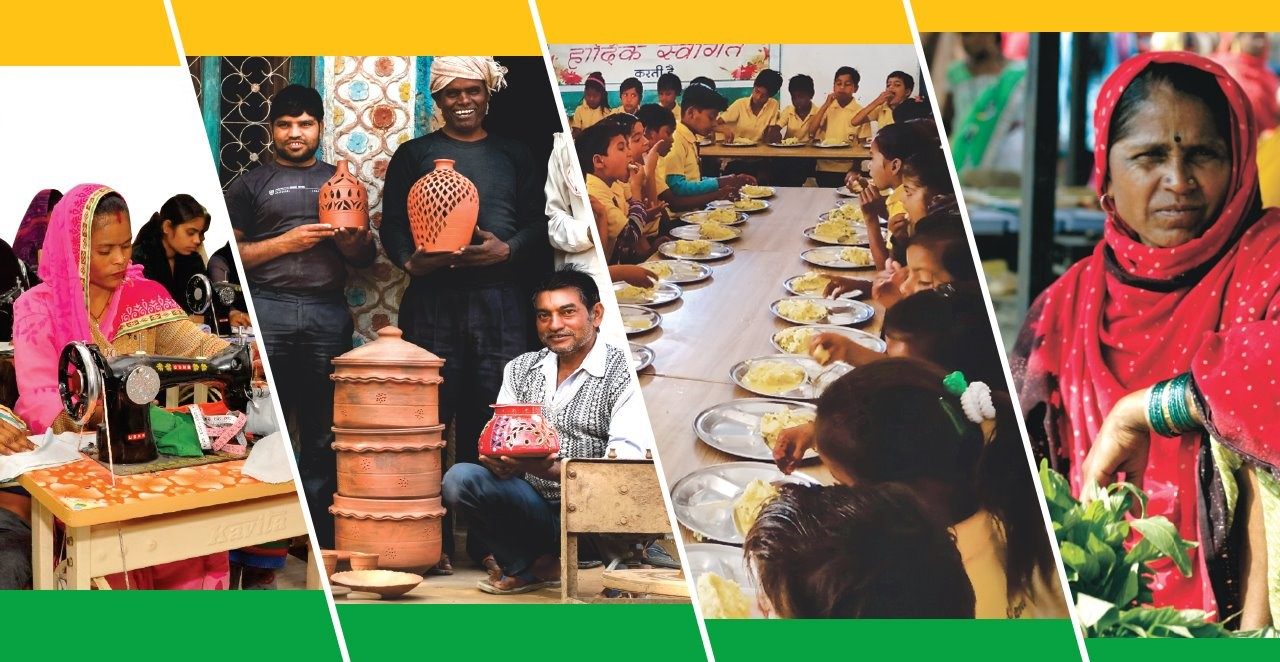

Success is not just defined by sales and profits but also by the impact one can make on the world and the people around them.
To transform these thoughts into actions, Dr Desh Bandhu Gupta established the Lupin Human Welfare & Research Foundation (LHWRF) to provide a sustainable, replicable, and continually evolving model of holistic rural development in India. In our journey of over three decades, we have touched the lives of people in over 5000 villages spread across 23 districts of nine States.
 We work in four thematic areas – Economic Progress, Social Improvement, Infrastructure Development and Natural Resource Management – encompassing a 360-degree programme of development for rural communities.
We work in four thematic areas – Economic Progress, Social Improvement, Infrastructure Development and Natural Resource Management – encompassing a 360-degree programme of development for rural communities.
We undertake economic development 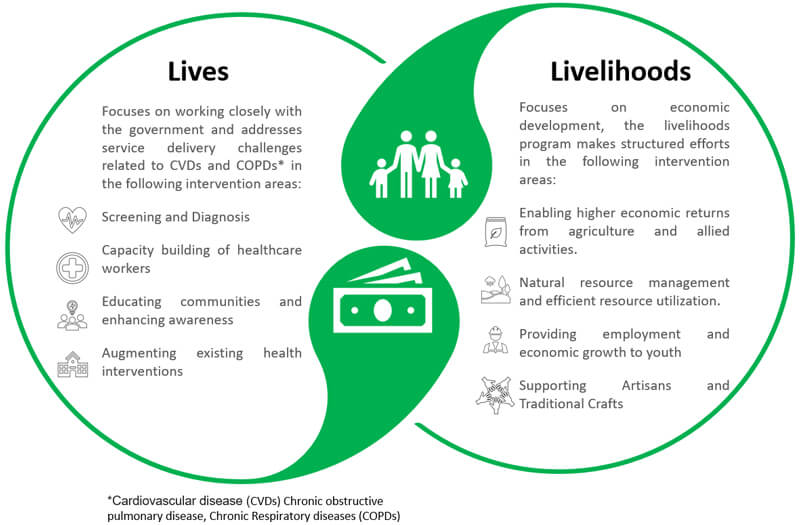 activities in agriculture, animal husbandry, women empowerment, and rural industries. Our social anchors include health and education, while infrastructure and natural resource development are the drivers of growth for the backward regions where we operate. Recently, we took a new strategic approach toward working not only on livelihoods but also on lives (healthcare).
activities in agriculture, animal husbandry, women empowerment, and rural industries. Our social anchors include health and education, while infrastructure and natural resource development are the drivers of growth for the backward regions where we operate. Recently, we took a new strategic approach toward working not only on livelihoods but also on lives (healthcare).
Our LHWRF Skill Development and Livelihood programme focuses on below-poverty-line (BPL) families in rural areas to enhance their socio-economic status. Through a family-centred approach, we initiate measures that enable them to break the cycle of poverty. Skill deficiency, particularly in rural India, is a major hurdle in realising the demographic dividend for the country. Skill training enables a quantum jump in incomes for individuals and families. We understand that each community may have its unique requirements. Thus, we work towards creating a differentiation that would help bring about a change at the grassroots level.
The Vision
Dr Gupta believed that Lupin is among the privileged few companies with the fundamentals in place to shape a better future for society, build a better tomorrow and make the world a healthier and happier place. We do not see this as a “good-to-have” but rather as a “must-have”.
We envision the Indian village of the future not only as being economically prosperous but also as a centre of social prosperity. We work to consciously integrate various stakeholders who can make a genuine, lasting difference – from corporates and planners to technologists and development-oriented organisations.
We aim to provide an alternative model of rural development that is sustainable, replicable, and ever-evolving, essentially empowering underprivileged and marginalised sections of society and providing basic infrastructure and a balanced ecological base to villages. Hello, gentlemen! I am Stefani from Slovenia Here is my motto – be healthy, be handsome, enjoy your life here and now !!! For your health – I offer swedish massage in my cozy studio 320/1h For your double fun – hot nuru slide – when between you and me only nuru gel – 380/1h For your beauty – I’ll shave your private areas … it’s a lot of fun + Swedish massage and result is always cute – 400 /1h Boston erotic massage I’ll show you what is real pleasure l nuru massage nyc manhattan
Flagship Initiatives
Our LHWRF Skill Development and Livelihood programme focuses on below-poverty-line (BPL) families in rural areas to enhance their socio-economic status. Through a family-centred approach, we initiate measures that enable them to break the cycle of poverty. Skill deficiency, particularly in rural India, is a major hurdle in realising the demographic dividend for the country. Skill training enables a quantum jump in incomes for individuals and families.
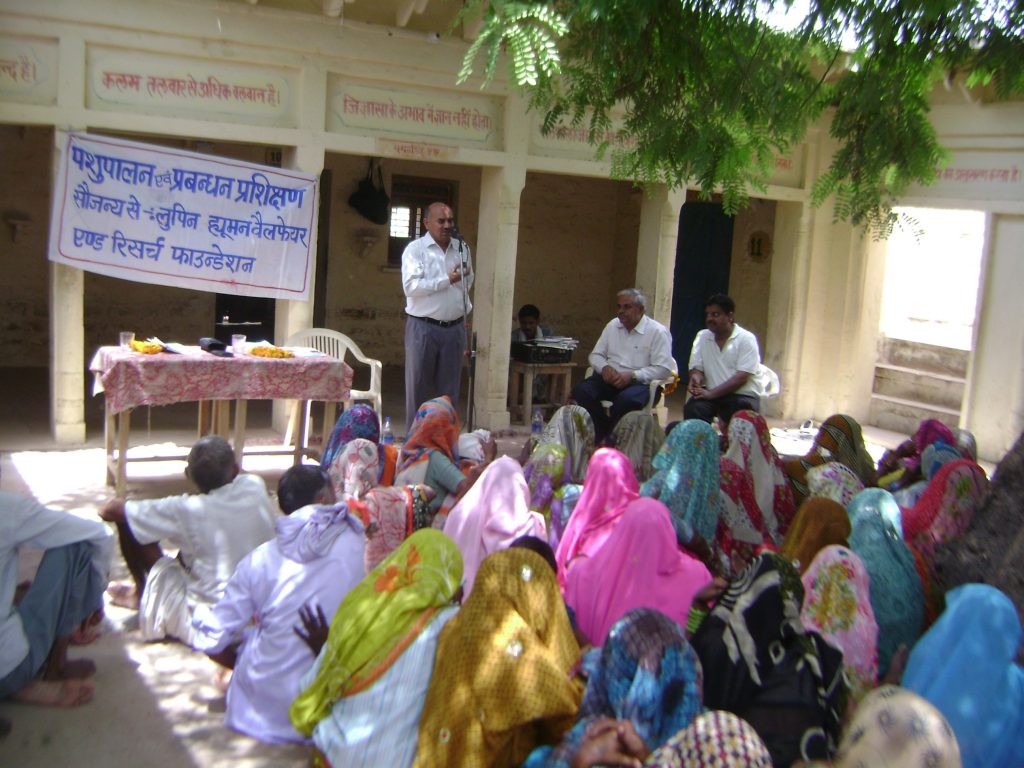 We understand that each community may have its unique requirements. Thus, we work towards creating a differentiation that would help bring about a change at the grassroots level. Our implementation model begins with a needs-based assessment across our villages. Participatory rural appraisal exercises such as baseline surveys, social mapping, focus group discussions, meetings with village leaders, and
We understand that each community may have its unique requirements. Thus, we work towards creating a differentiation that would help bring about a change at the grassroots level. Our implementation model begins with a needs-based assessment across our villages. Participatory rural appraisal exercises such as baseline surveys, social mapping, focus group discussions, meetings with village leaders, and 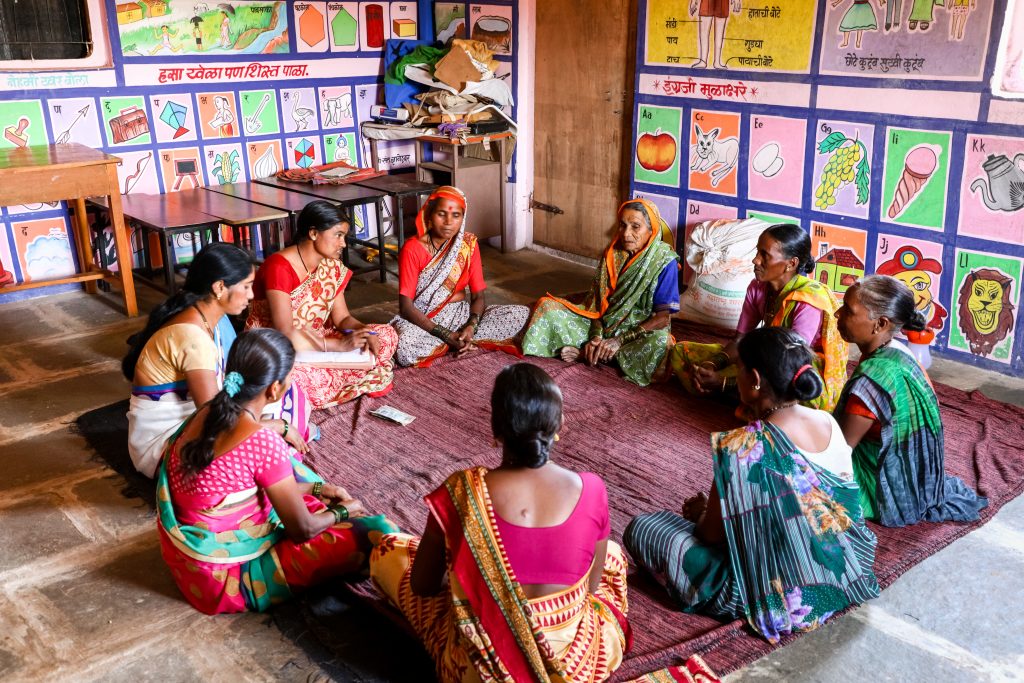 transect walks help us ascertain the genuine requirements of the villages.
transect walks help us ascertain the genuine requirements of the villages.
Key drivers of economic development are structured as long-term programmes and interventions in agriculture, animal husbandry, women empowerment, and rural industries. We work extensively with various 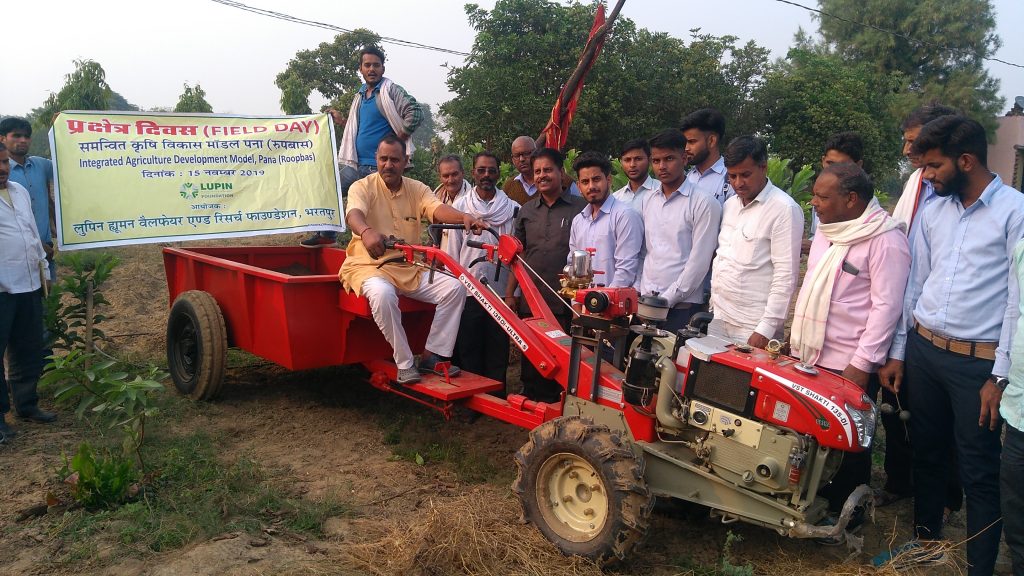 government and non-government partners, international development agencies, and like-minded philanthropic organisations to mobilise additional resources and extend our reach to several more isolated and underserved populations. These include landless tribal communities, members of scheduled castes, and minority populations in target geographies.
government and non-government partners, international development agencies, and like-minded philanthropic organisations to mobilise additional resources and extend our reach to several more isolated and underserved populations. These include landless tribal communities, members of scheduled castes, and minority populations in target geographies.
Over the years, we have primarily focused on building sustainable livelihood opportunities and triggering economic growth in some of the most backward and underdeveloped districts.
The trades where we provide training are exhaustive and as per NSDC guidelines. The training and subsequent assistance aim to generate farm, off-farm and non-farm livelihood avenues within the village or in nearby townships. For wage-based employment, we impart training on the trades in demand, both locally and in distant cities. We also provide computer training (MS Office, Data Entry & Tally) in partnership and affiliation with competent bodies like the NSDC or State SDCs at our different LHWRF Skill Training Centres – a prerequisite qualification for multiple educational courses and government jobs.
Focus
We provide skill training and credit support for livelihood security among vulnerable sections and work towards skill development and wage employment for livelihood security. By helping to establish and strengthen rural enterprises, we enable communities with diverse livelihood options. We also work towards equipping rural service providers to help increase their incomes and generate employment. We also prioritise the revival and strengthening of rural artisanship and work towards increased livelihood options for artisan communities.
We take special efforts in our adopted areas to identify, introduce and establish trades or vocations that can provide multiple livelihood options to people within the village itself.
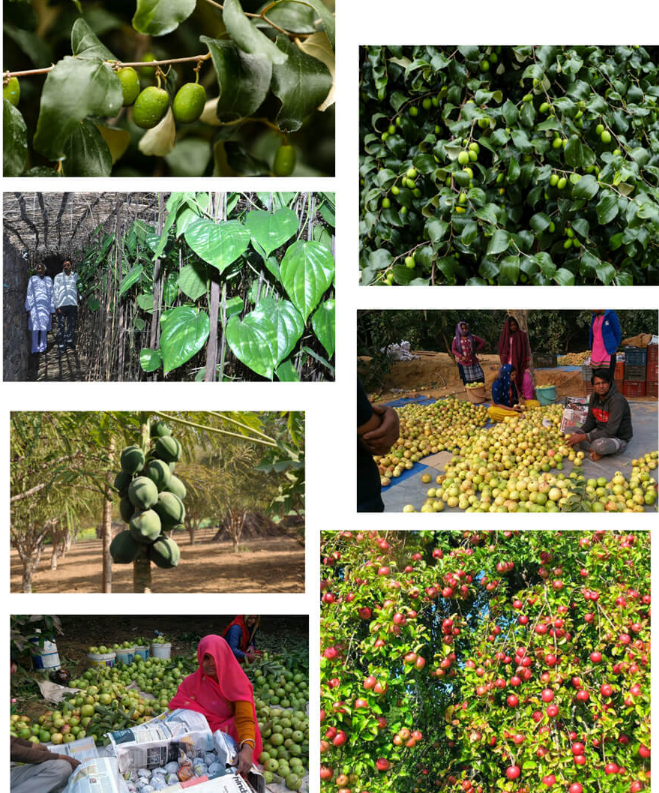
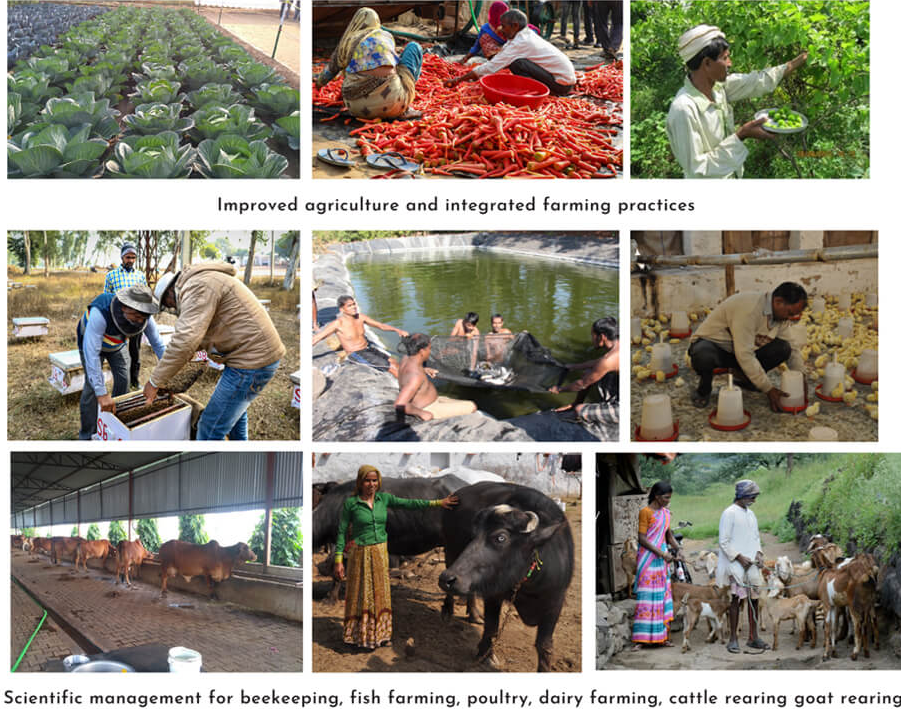
Apart from the farm and farm-allied livelihoods, non-farm vocations were established, nurtured and strengthened over time. This mix of different livelihood activities has increased options for livelihood for artisans, farmers, and the underprivileged in the villages where we work.
Multi-Skill Training Centres
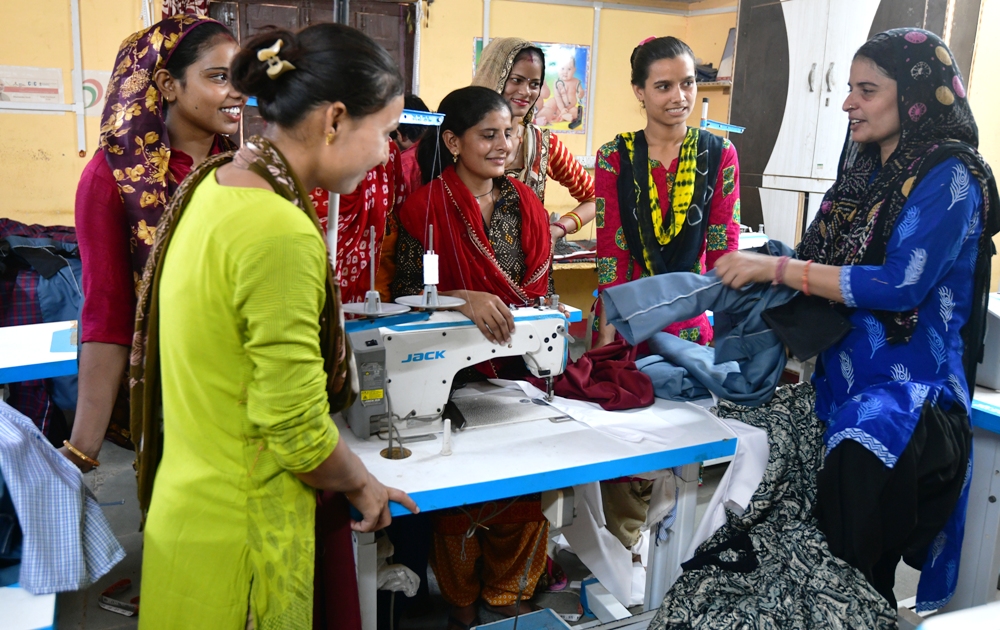 We established multi-skill training centres at various locations to provide training in multiple trades. The programmes primarily equip young men and women to set up new enterprises or gain employment for skills in demand.
We established multi-skill training centres at various locations to provide training in multiple trades. The programmes primarily equip young men and women to set up new enterprises or gain employment for skills in demand.
The trades where we provide training are exhaustive 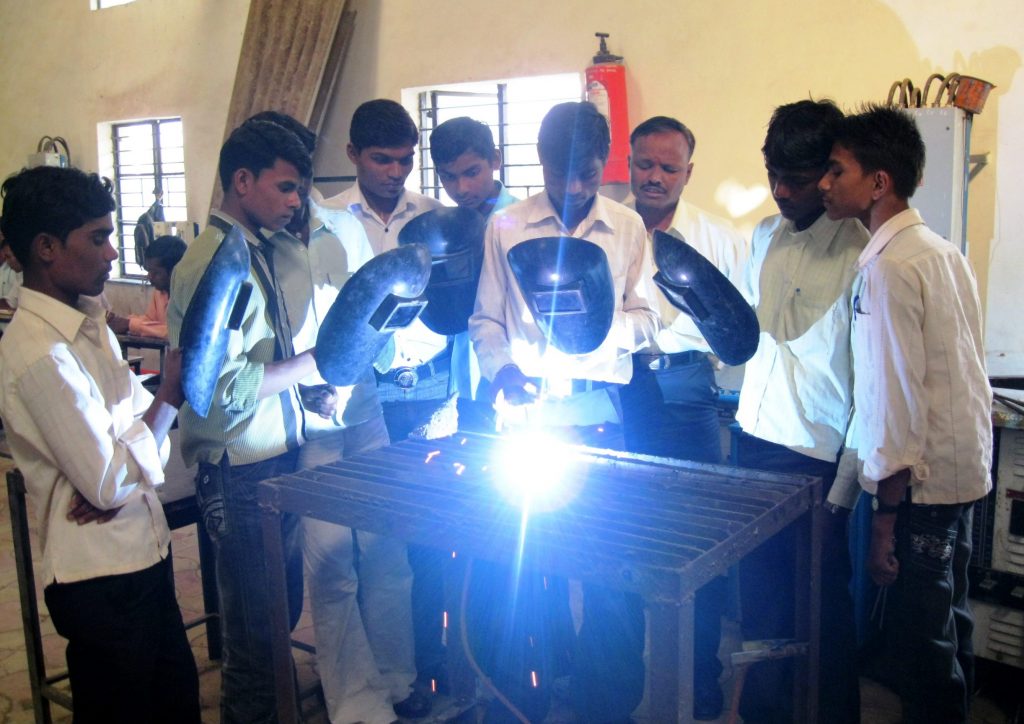 and as per NSDC guidelines. The training and subsequent assistance aim to generate farm, off-farm and non-farm livelihood avenues within the village or in nearby townships. For wage-based employment, we impart training on the trades in demand, both locally and in distant cities.
and as per NSDC guidelines. The training and subsequent assistance aim to generate farm, off-farm and non-farm livelihood avenues within the village or in nearby townships. For wage-based employment, we impart training on the trades in demand, both locally and in distant cities.
We cover a wide range of skilled trades and 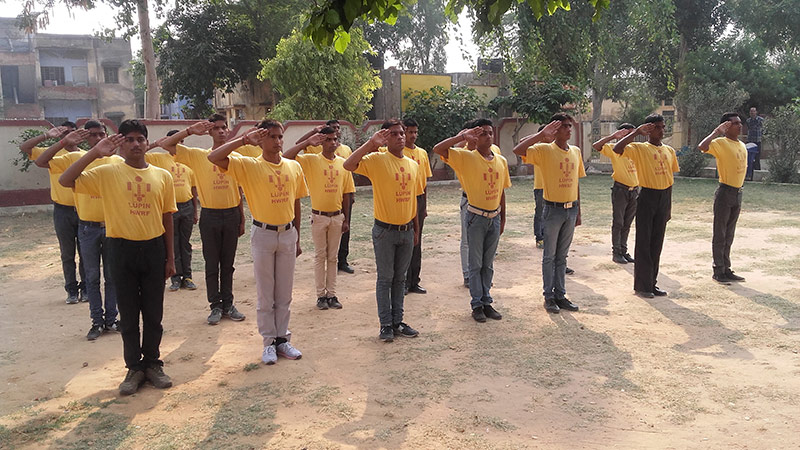 entrepreneurial activities Some of the non-farm-based programmes we run through multi-skill training centres across locations are computer literacy, data entry operator, mobile repairing, security guard, housekeeping attendant, electrician, masonry and concrete work, chauffeur/taxi driver, four-wheeler driving, tailoring, garment making, beauty parlour,
entrepreneurial activities Some of the non-farm-based programmes we run through multi-skill training centres across locations are computer literacy, data entry operator, mobile repairing, security guard, housekeeping attendant, electrician, masonry and concrete work, chauffeur/taxi driver, four-wheeler driving, tailoring, garment making, beauty parlour, 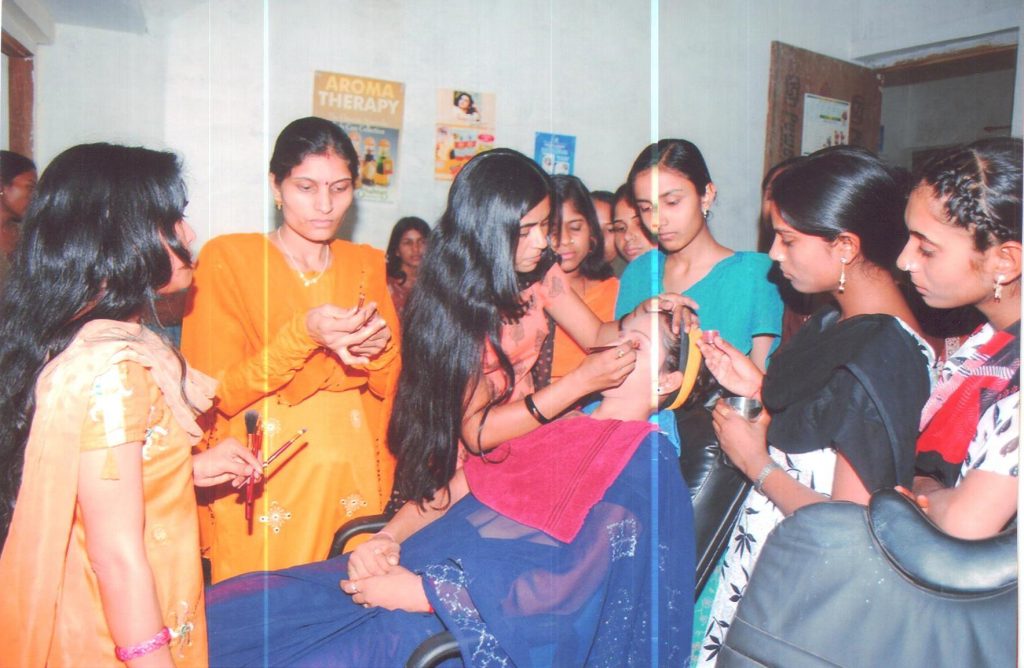 welding and fabrication, food and beverage service-steward, and medical attendant.
welding and fabrication, food and beverage service-steward, and medical attendant.
We also provide computer training (MS Office, Data Entry & Tally) in partnership and affiliation with competent bodies like the NSDC or State SDCs at our different LHWRF Skill Training Centres – a prerequisite 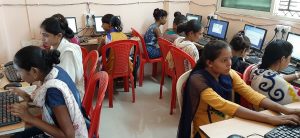 qualification for multiple educational courses and government jobs. These are short-term courses (from one to nine months) designed per NSDC guidelines. Each batch consists of 20-30 trainees. The minimum educational qualification required for these vocational training programmes is Class X passed. We conduct these programmes in multiple locations across India.
qualification for multiple educational courses and government jobs. These are short-term courses (from one to nine months) designed per NSDC guidelines. Each batch consists of 20-30 trainees. The minimum educational qualification required for these vocational training programmes is Class X passed. We conduct these programmes in multiple locations across India.
In addition, we implement several farm-based skill training and upgradation per geographic needs and requirements. Some skill trades promoted at specific locations are commercial livestock development, including dairy farming, goat rearing and poultry, bee-keeping, food processing, tulsi mala making, clay-based tawa making, etc.
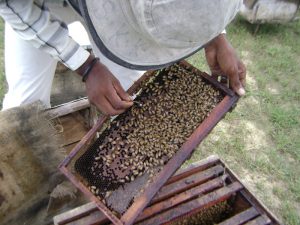
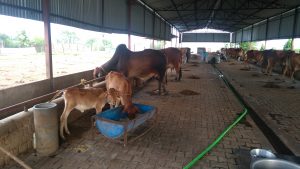
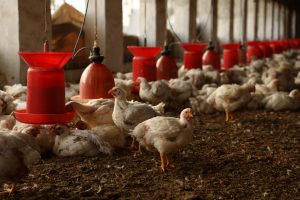
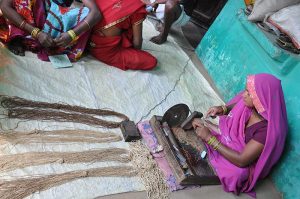
The skill development programmes are run at the village level through participant selection drives to identify, shortlist and select primary beneficiaries among the youth, women, and farmers. While selecting beneficiaries, we give special attention to participants who need it the most, especially marginalised, landless, and minority households. In addition, there are prerequisites for beneficiary selection for each trade and skill. This ensures the formation of a homogenous batch with similar academic and technical qualifications. Secondly, location-specific prioritisation of trades and customisation during the beneficiary selection process ensures that the programme reaches out to the most marginalised and underserved communities.
Across various traditional vocations, skill transfer and technological upgrading can make all the difference in terms of returns or tapping distant urban markets. Hence, we adopted a strategy of providing appropriate skills and cost-effective, high-impact technologies to rural entrepreneurs. This has transformed vocations like shoe making, bangle making and many others.
Our skill training is followed by placement assistance, handholding and mentorship for setting up self-enterprises. This microenterprise development for income generation is achieved through building credit and market linkages.
Several rural service providers such as barbers, masons, cobblers, plumbers, motorcycle mechanics and electricians can operate efficiently and earn more, empowering them to transform from workers to masters through the training and specially-designed toolkits we provide.
Around 75 per cent of the candidates trained entered the workforce and started income generation through jobs in relevant industries, micro-enterprises and self-employment.
For self-employment support, we assist trainees with toolkits, sewing machines, and access to institutional credit to set up their enterprises. We also provide critical micro-enterprise development support and handholding to participants, boosting their confidence and resolving any teething issues. We promote several group enterprises as part of the micro-enterprise development effort. We have reached out to more than 42,000 youth, women, and farmers, benefiting them through job placement and self-employment support.
Garment Hubs
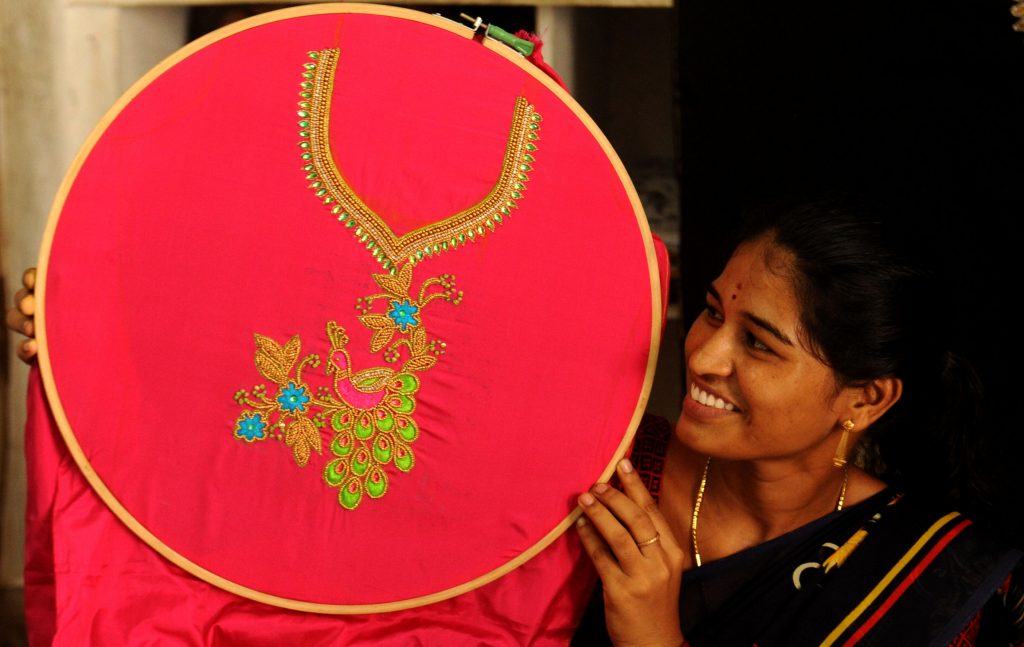 We have established many garment hubs in the villages we operate. We provide training for garment designing and making, Arya Maggam (southern embroidery) training and support for purchasing tailoring machines.
We have established many garment hubs in the villages we operate. We provide training for garment designing and making, Arya Maggam (southern embroidery) training and support for purchasing tailoring machines.
In Tarapur, the success of the garment manufacturing unit has led to an affiliation with 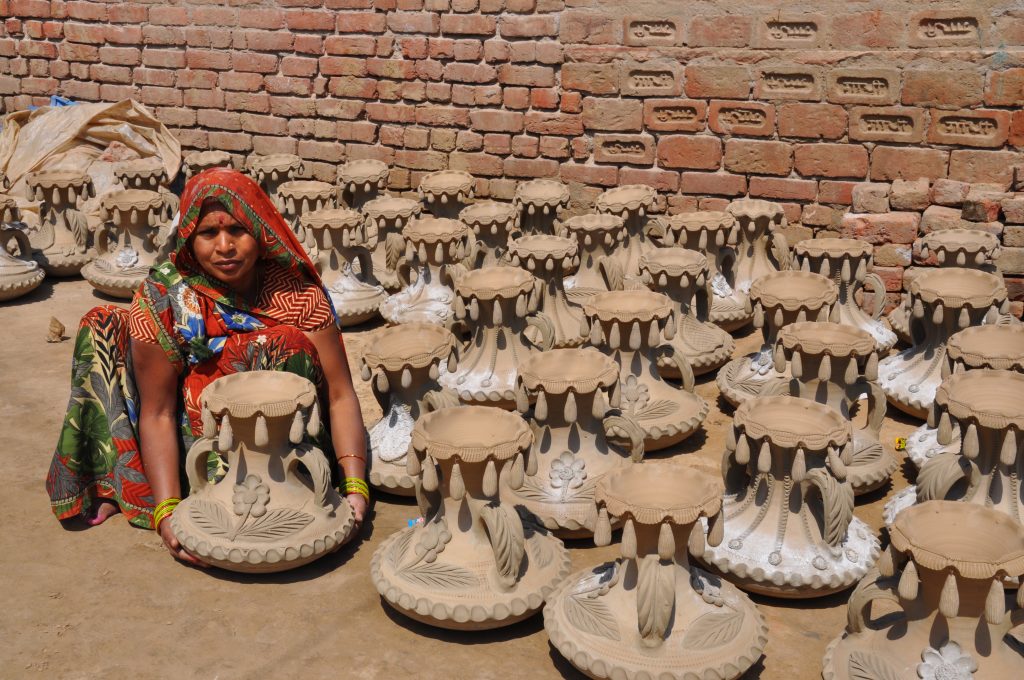 some elite brands in India.
some elite brands in India.
Reviving Traditional Artisanship
Our Foundation also supports the revival and preservation of traditional artisanship. This helps provide a decent livelihood to communities traditionally engaged in those occupations.
Impact
The programmes have resulted in the following benefits for the communities:
- Increased wage and self-employment among the youth and women.
- Increase in skills leading to incremental income levels (per day rate) of trained persons.
- Workers or job seekers turn entrepreneurs through skill, credit and market support.
- Greater livelihood options for the landless, women and youth within and in their village vicinity.
- Conservation of traditional art as well as generation of employment through it.
- Reduction in distress migration from rural to urban areas.
Enabling Self Employment
For self-employment support, we assist trainees with toolkits, sewing machines, and access to institutional credit to set up their enterprises. We also provide critical micro-enterprise development support and handholding to participants, boosting their confidence and resolving any teething issues. We promote several group enterprises as part of the micro-enterprise development effort. We have reached out to more than 42,000 youth, women, and farmers, benefiting them through job placement and self-employment support. The average additional income earned by participants involved in micro-enterprise is Rs 60,000, whereas, among youth employed in trades such as unarmed security guards, drivers, medical assistants, food and beverage assistance, etc., the income is more than Rs 1,20,000.
Success Stories
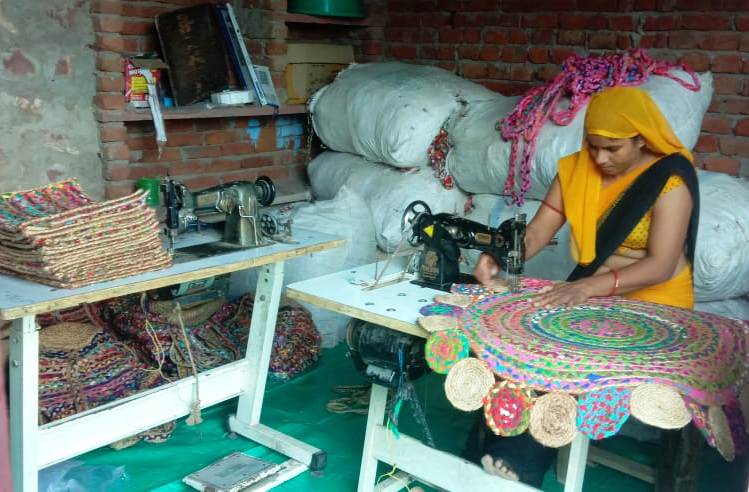 After training from LHWRF, Brijesh Bhargav from Khanua village started a small business. She currently employs over 35 women from her village in her floor mat business. She uses handmade cloth and jute to make the mats with unique designs that appeal to both urban and rural customers. She sells these floor mats at local craft fairs, Saras Fair, Delhi Haat, IITF exhibitions, etc. During times of high demand, she employs other women from sixteen SHGs in her village and provides them with self-employment opportunities. The business allows Brijesh to earn between Rs 25,000 and 30,000 per month. Her enterprise enables women to earn between Rs 10,000 and 15,000.
After training from LHWRF, Brijesh Bhargav from Khanua village started a small business. She currently employs over 35 women from her village in her floor mat business. She uses handmade cloth and jute to make the mats with unique designs that appeal to both urban and rural customers. She sells these floor mats at local craft fairs, Saras Fair, Delhi Haat, IITF exhibitions, etc. During times of high demand, she employs other women from sixteen SHGs in her village and provides them with self-employment opportunities. The business allows Brijesh to earn between Rs 25,000 and 30,000 per month. Her enterprise enables women to earn between Rs 10,000 and 15,000.
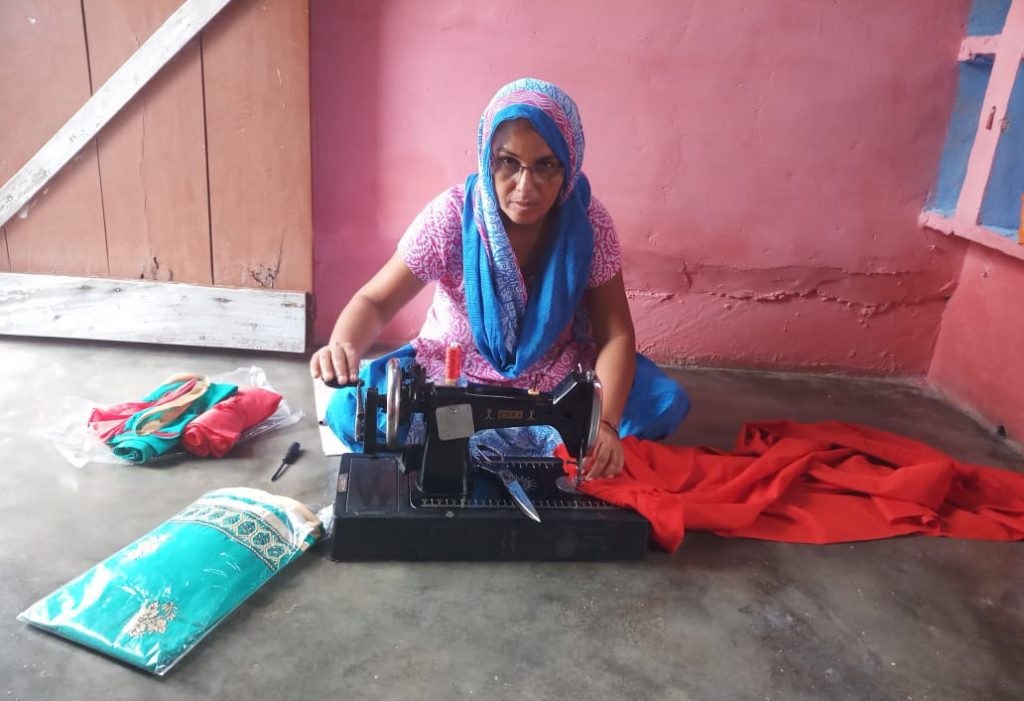 Similarly, Suman Singh, a single mother with two children, started her own tailoring business 20 years ago. She was appointed as a sewing centre trainer when LHWRF began working in her village. Eventually, she trained several young girls in sewing, but they were not yet ready to become independent entrepreneurs. With the support of LHWRF, Suman started a small garment production business. Over 35 women are currently involved in the business, earning a respectable income of over Rs 10,000. Today, they even supply clothing to some of the big brands. Women in Bharatpur look up to Suman for inspiration when making important decisions to ensure their well-being and that of their families.
Similarly, Suman Singh, a single mother with two children, started her own tailoring business 20 years ago. She was appointed as a sewing centre trainer when LHWRF began working in her village. Eventually, she trained several young girls in sewing, but they were not yet ready to become independent entrepreneurs. With the support of LHWRF, Suman started a small garment production business. Over 35 women are currently involved in the business, earning a respectable income of over Rs 10,000. Today, they even supply clothing to some of the big brands. Women in Bharatpur look up to Suman for inspiration when making important decisions to ensure their well-being and that of their families.
Aligning with Societal Needs
We implement our programmes with government bodies in line with flagship initiatives and missions launched by the Government of India. This congruence is instrumental in ensuring the continuity and sustainability of projects as the Government shall continue efforts for skill building even after the project concludes. In addition, we have established technical and knowledge partnerships with various agriculture universities, including IIT Delhi, to leverage our resources and technical expertise. Using such models, the Bharatpur Skill Development Centre established unique courses for bangle and clay tawa making, among others, driven by technology transfer and leveraging of intellectual resources.
The programmes have brought about multiple changes on the socio-economic front for the beneficiary community. There is a notable increase in income, reduced migration, access to financial services, acquisition of new skill sets and increased sharing of occupational knowledge among the community members, especially youth, women and farmers.
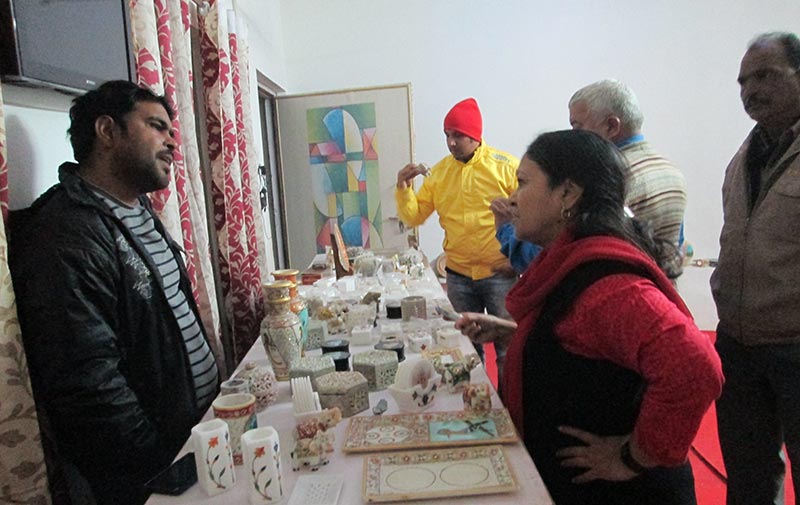
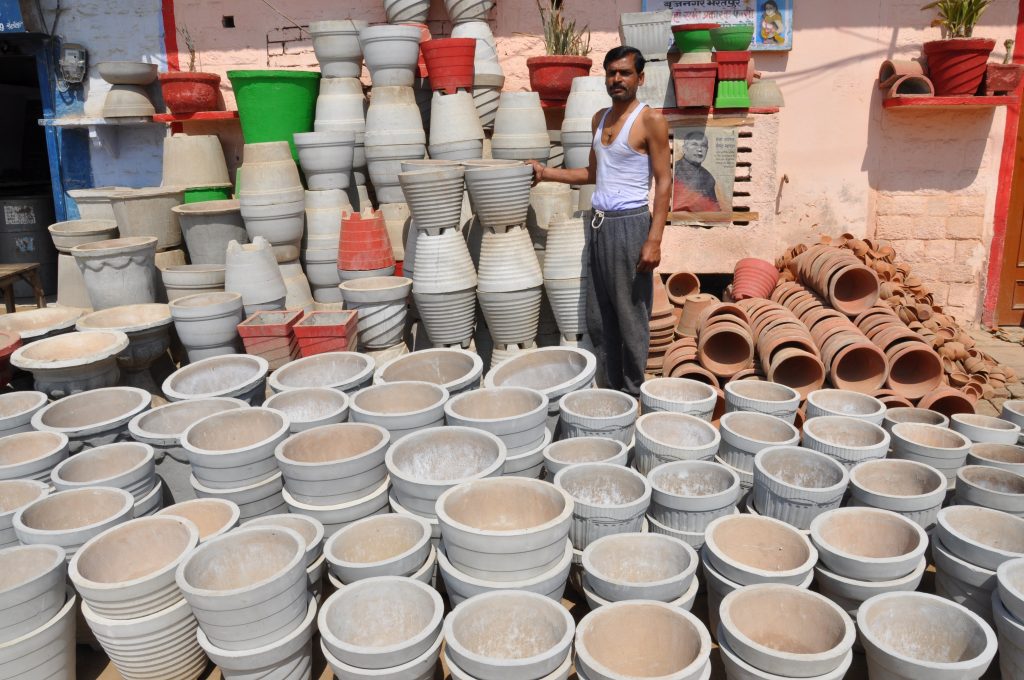
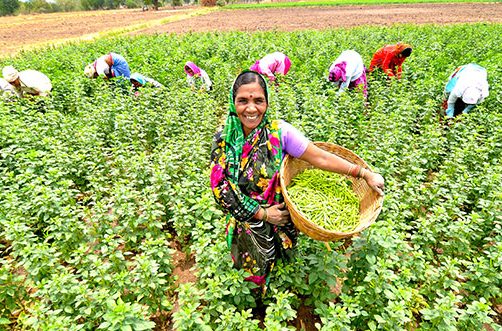
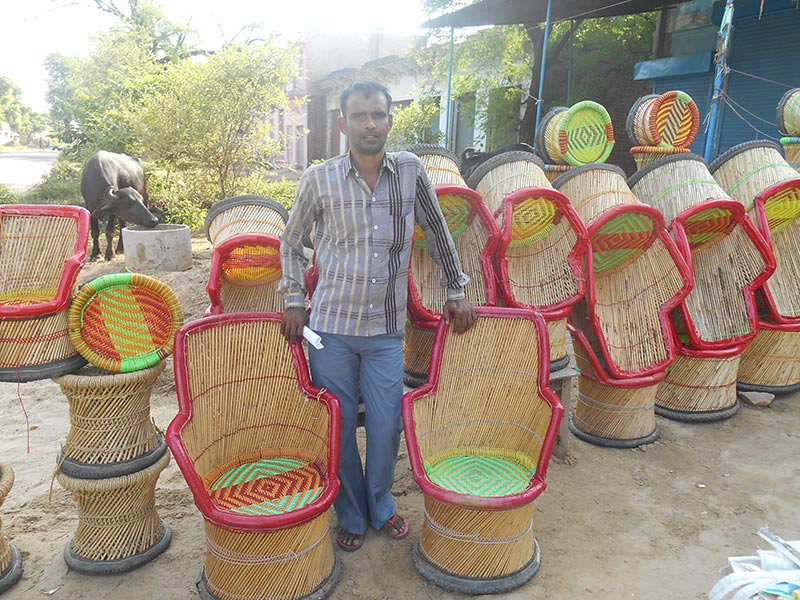
One of the most crucial learnings generated from the programme is the alignment to the skill gap or demand from local industries. This is imperative for the success of any skill development programme and it has ensured successful placements and the generation of local self-employment at the grassroots level.
Replicating Success
Gaining insights from skill development programmes implemented in Bharatpur and Dhule clusters, we have replicated various programmes in other geographies. We at LHWRF are committed to skill development. We have invested more than Rs 8.33 Crores towards skill development initiatives from 2019-22. It has also established various strategic partnerships by regularly mobilising additional funds and resources for the cause.
Impact Points
Here are some of the critical impact standpoints generated from the programme:
– Out of the total trained participants from the skill development programme, over 75 per cent of participants are involved in income generation activities post-training, being placed at jobs, self-employed or involved in micro-enterprises.
– Around 40 per cent of skill development programme participants establish microenterprises by accessing institutional credit.
– More than 75 per cent of participants are involved in income-generation activities.
– Group enterprises have emerged at the cluster level after the skill development programme, providing self-employment to beneficiaries and non-beneficiaries of the programme.
The Way Ahead
In the coming five years, the skill development programme shall evolve as a lighthouse initiative for rural empowerment and social inclusion. Our team is making systematic efforts to cover more participants and generate economic growth opportunities for the most marginalised sectors, especially women and youth from tribal, backward communities and minorities. In addition to ensuring participation, we will emphasise developing an enabling ecosystem for youth and women entrepreneurs at the cluster level and empowering them to lead the local skill ecosystem.
We will focus on strengthening our skill development programme through the following:
- The standard course curriculum for all trades as per guidelines of NSDC (National Skill Development Corporation)
- Targeting participants from impoverished families who are serious about pursuing a career in the space
- Training centres to optimise infrastructure
- Introducing systems for participant enrolment with baseline information to be used to measure outcomes after completion of the training. Introduced pre-and post-tests to capture the quality and effectiveness of the training
To improve skilling for green jobs, we will develop more courses to promote a green economy, solar energy, micro irrigation, affordable housing and backwards-forward linkages with agriculture.
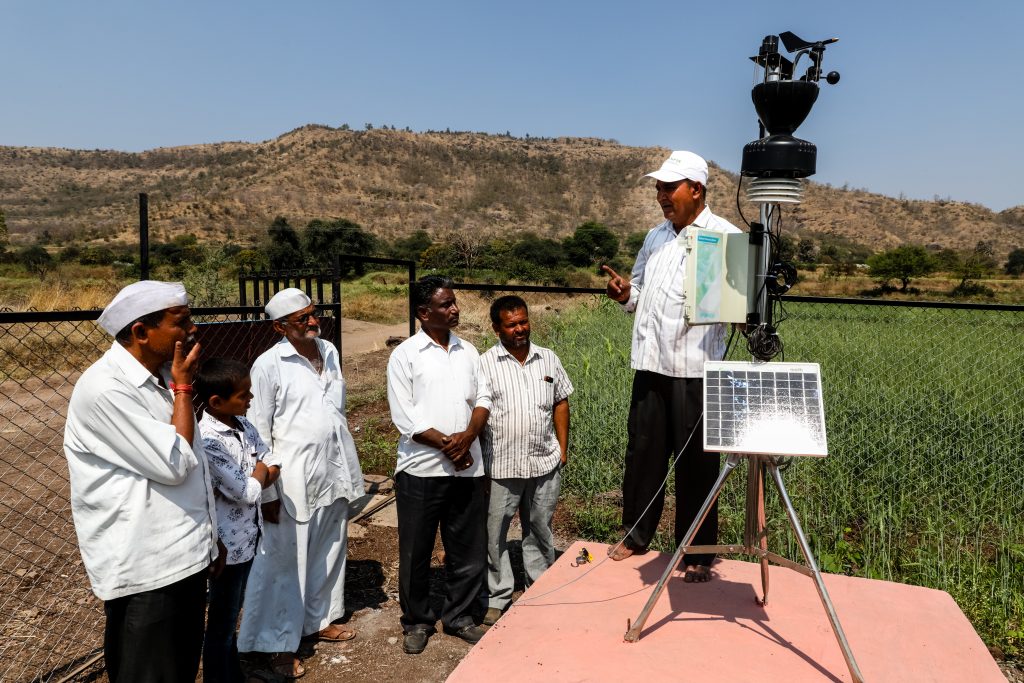
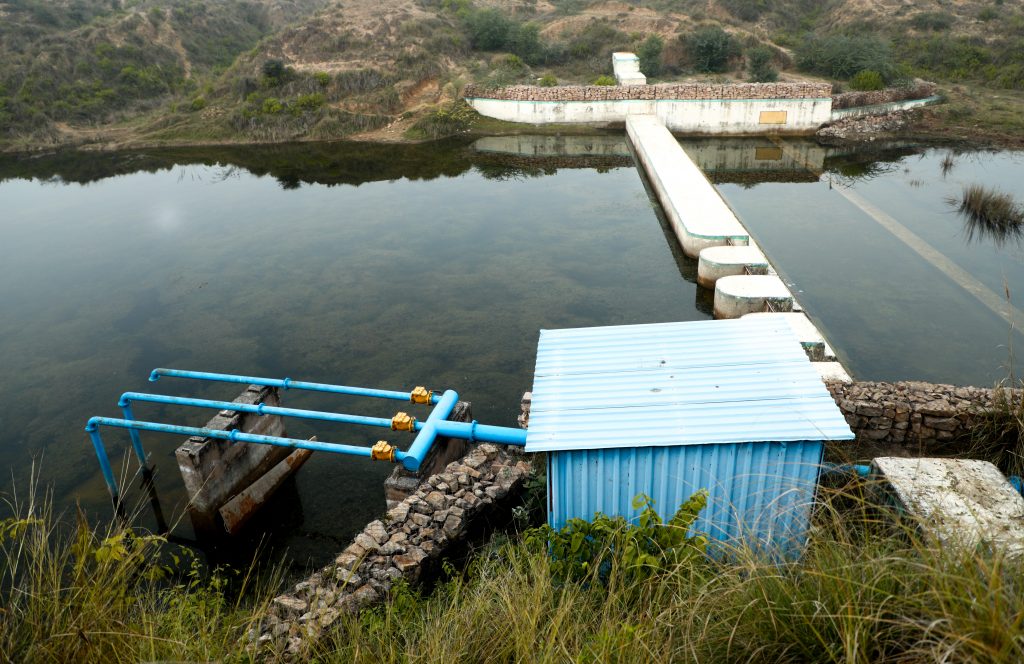
One of the most crucial learnings generated from the programme is the alignment to the skill gap or demand from local industries. This is imperative for the success of any skill development programme and it has ensured successful placements and the generation of local self-employment at the grassroots level.
Tushara Shankar is the Head of Corporate Social Responsibility at Lupin Limited.

